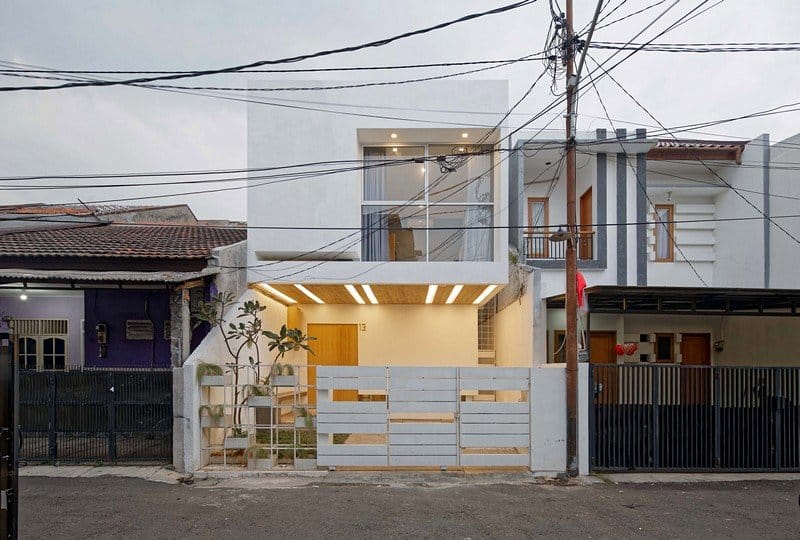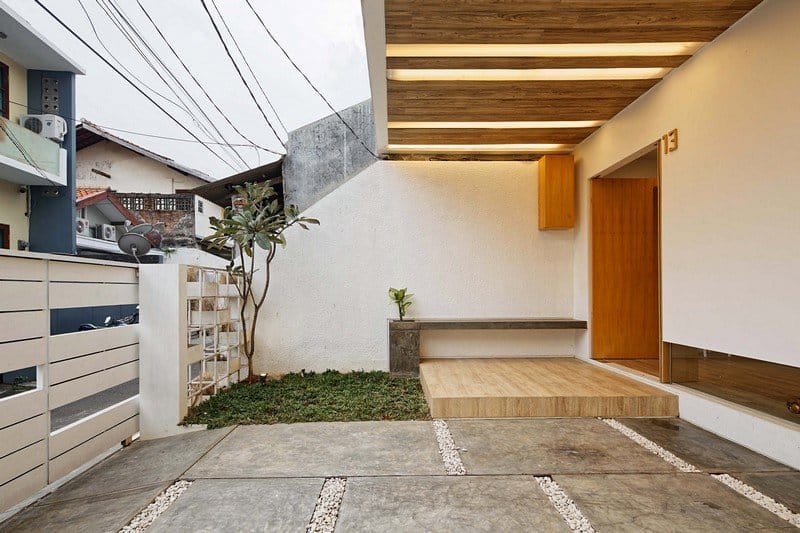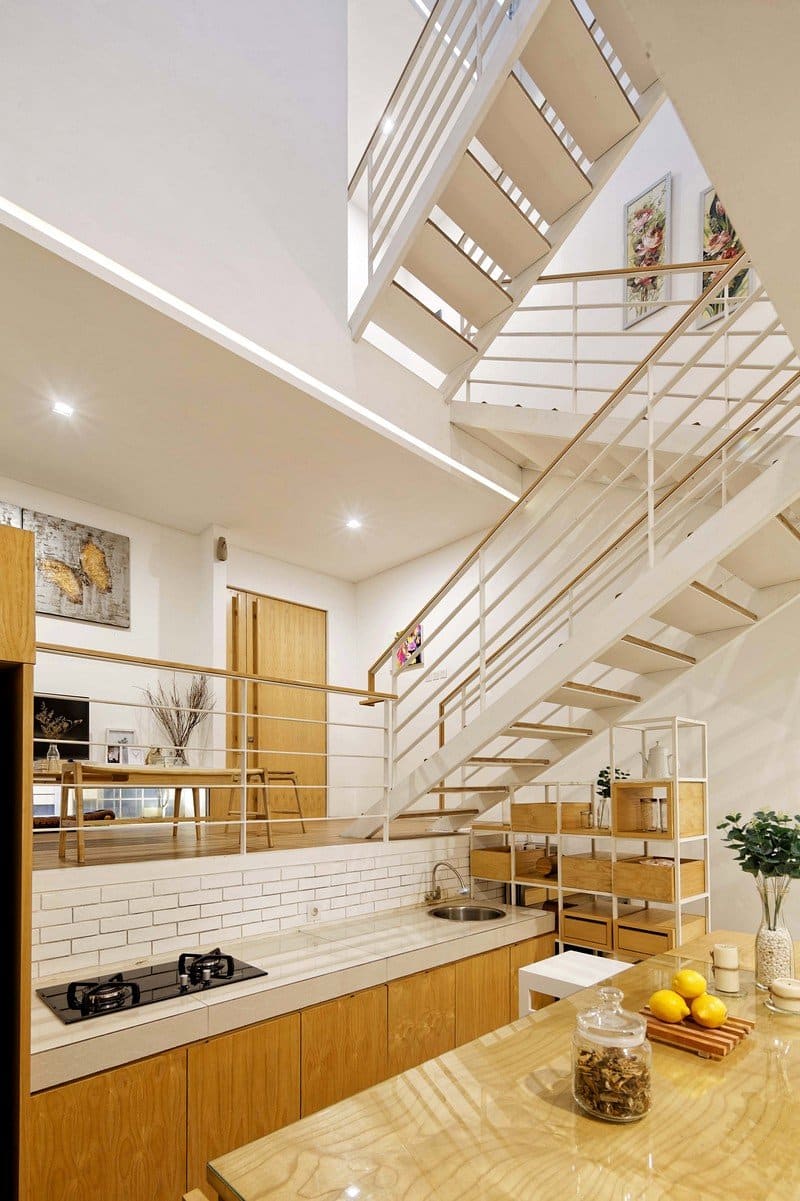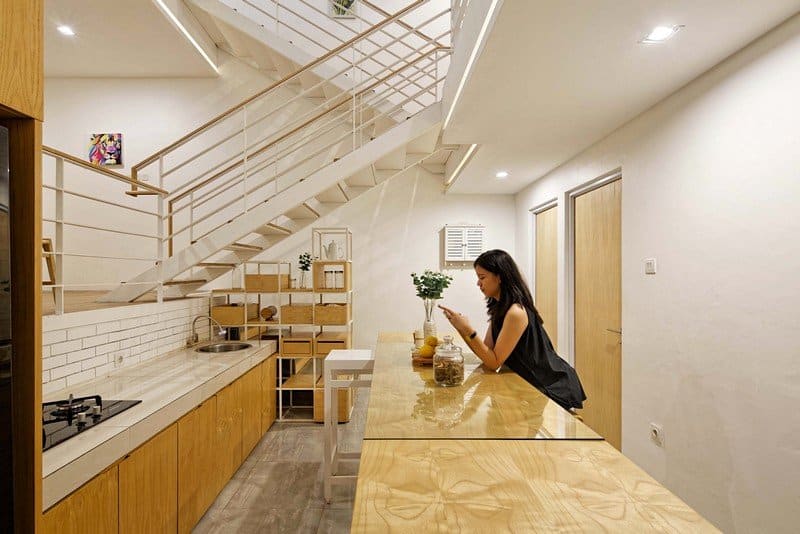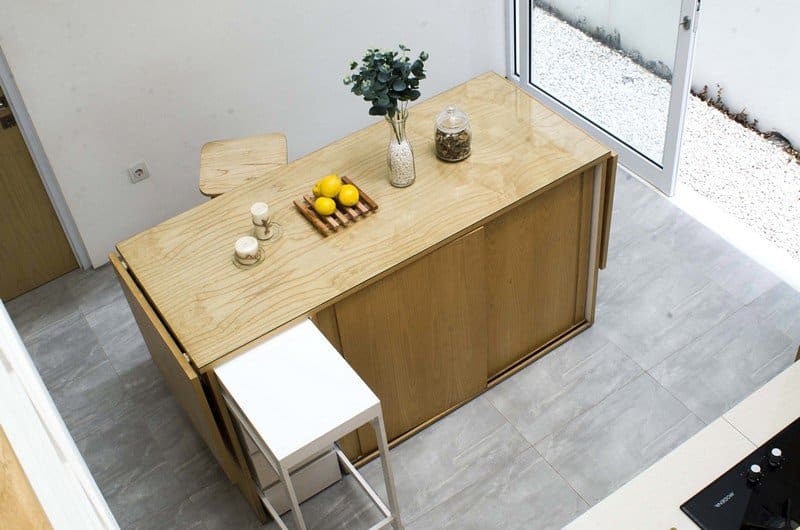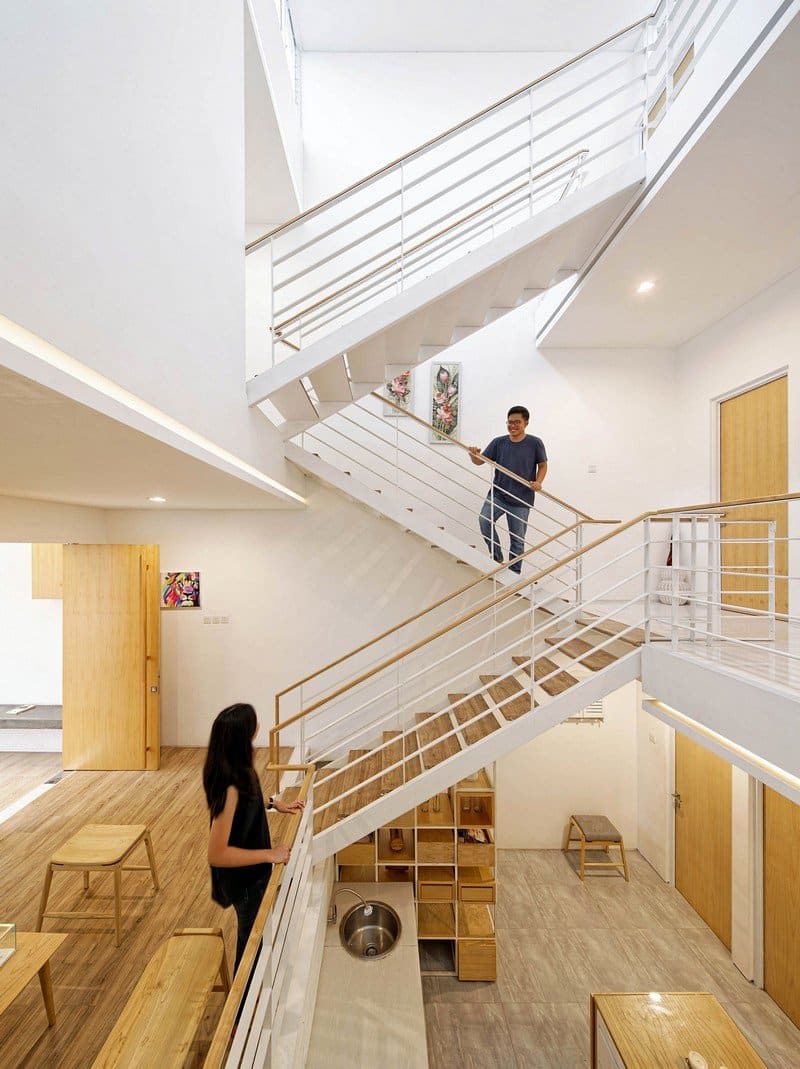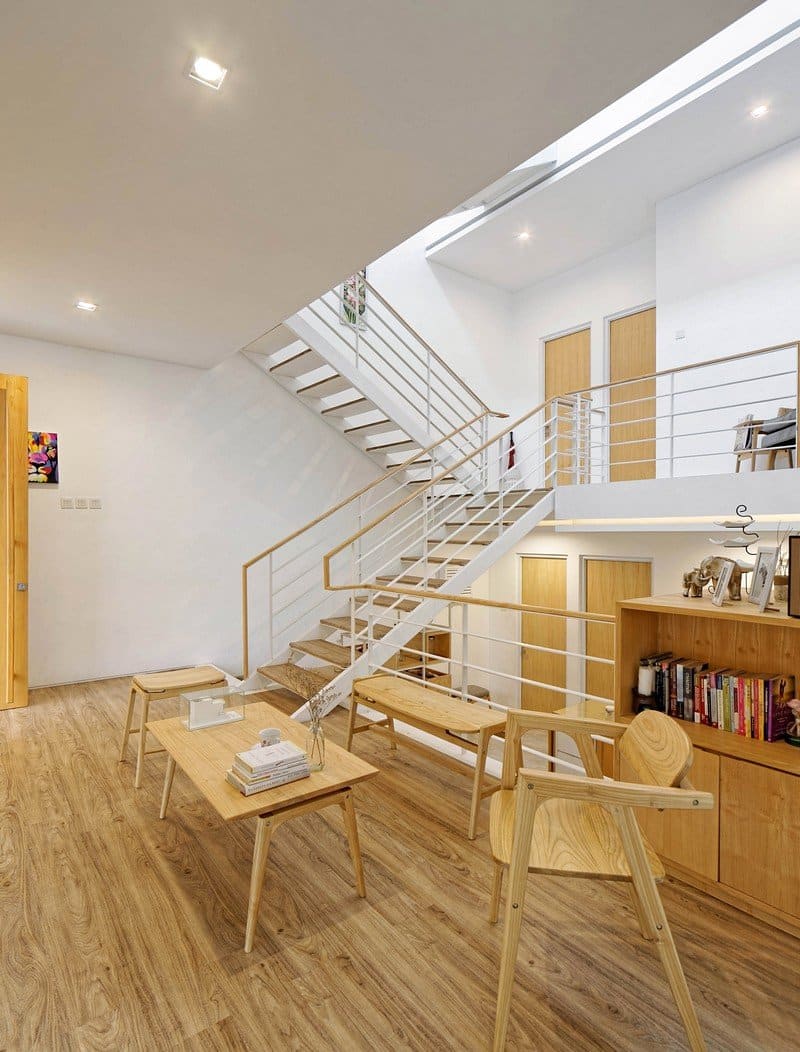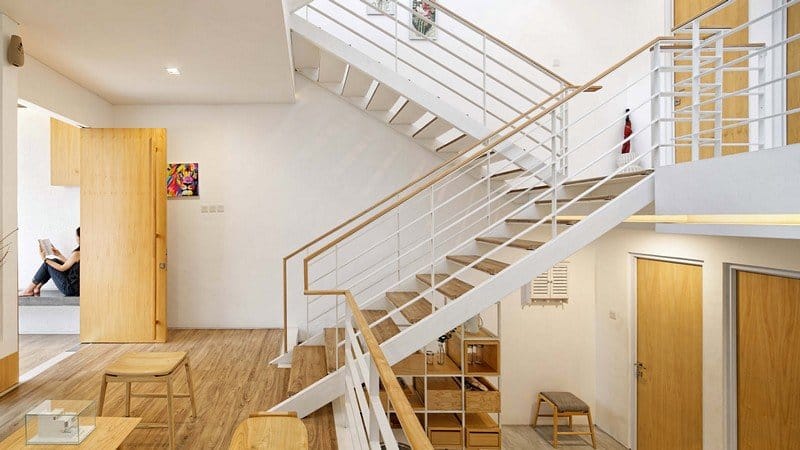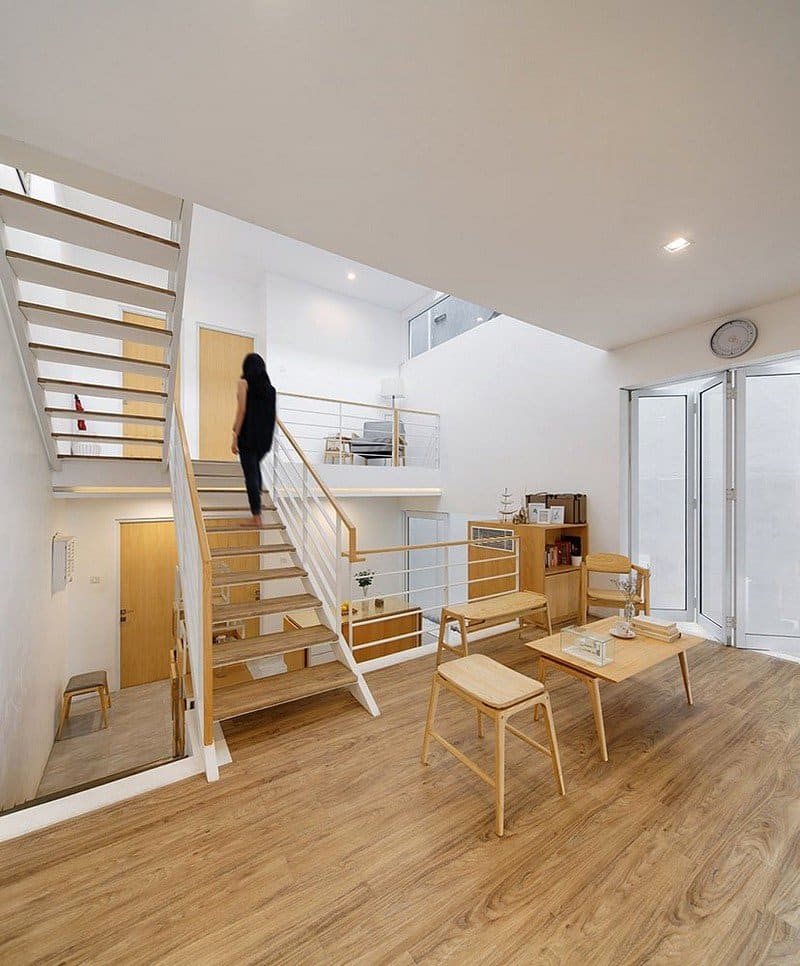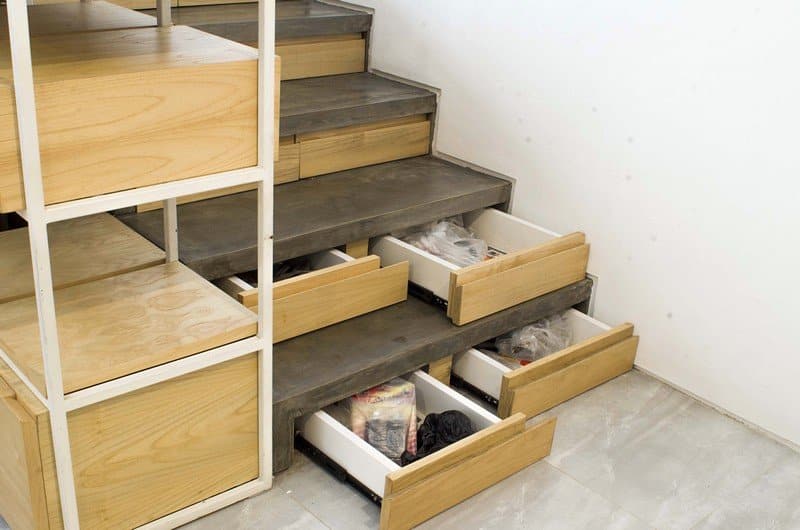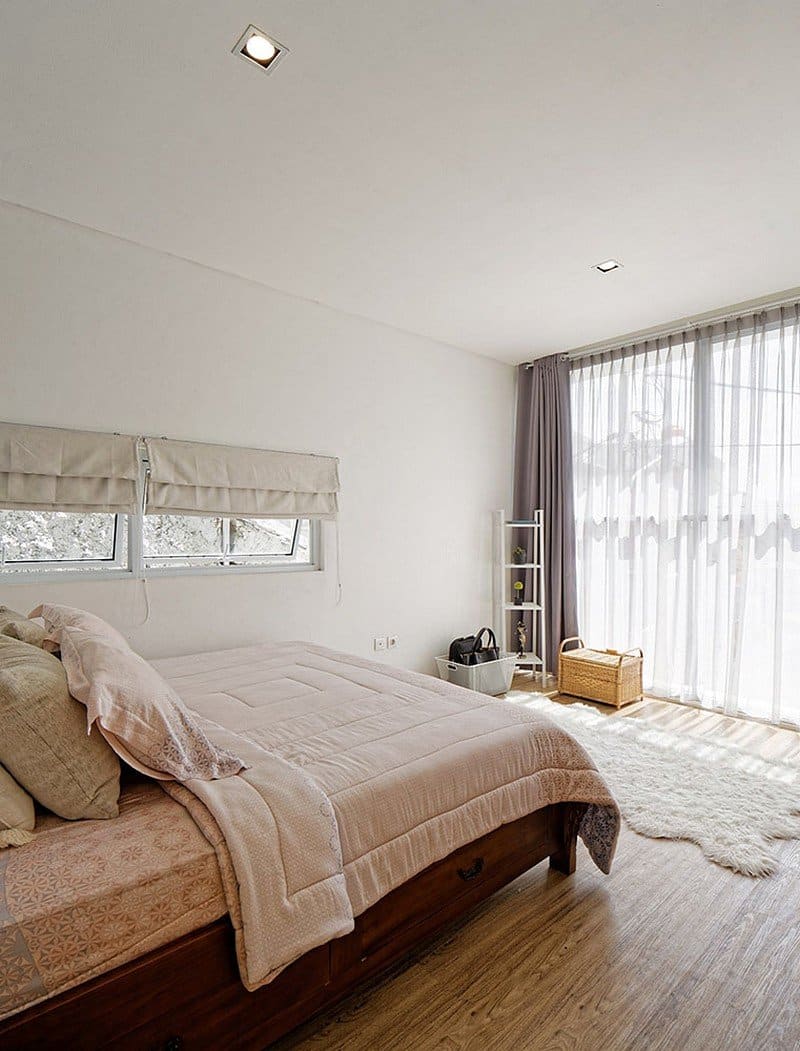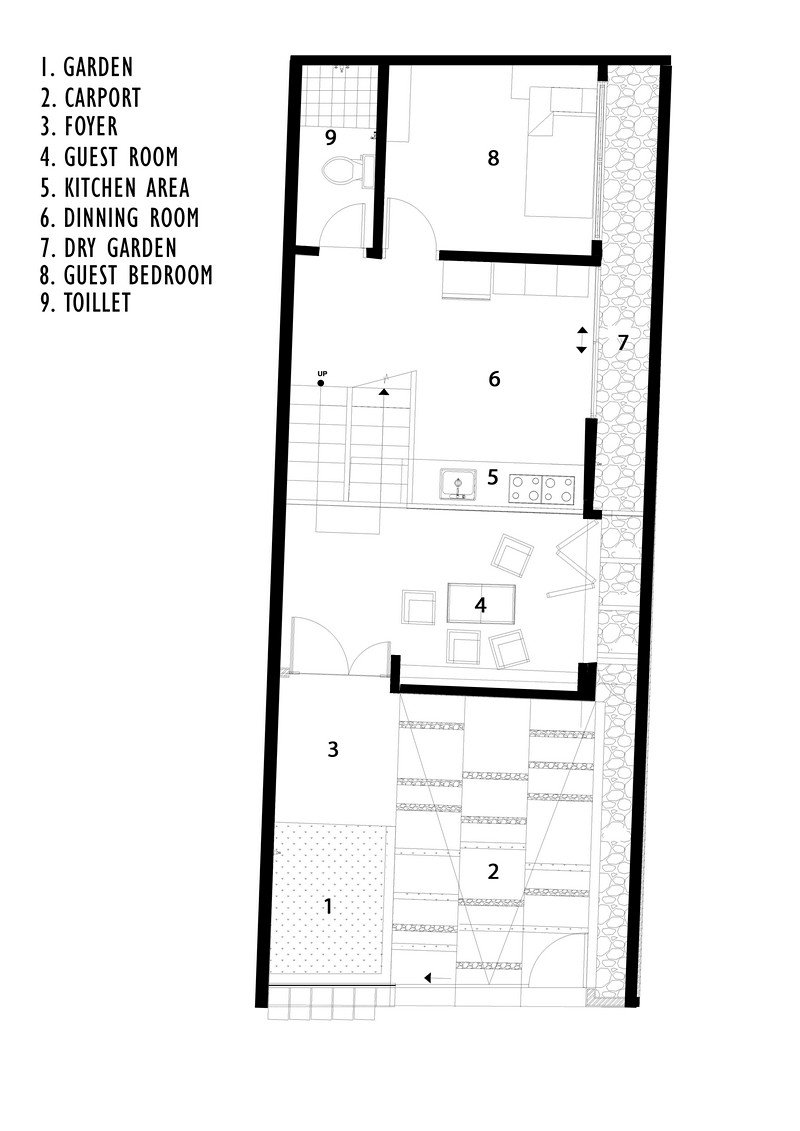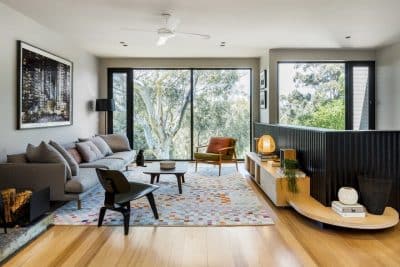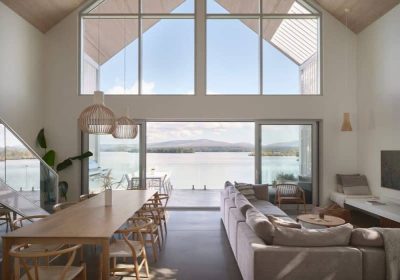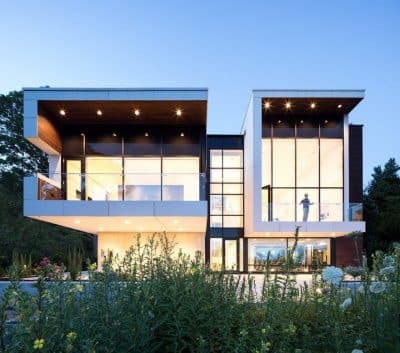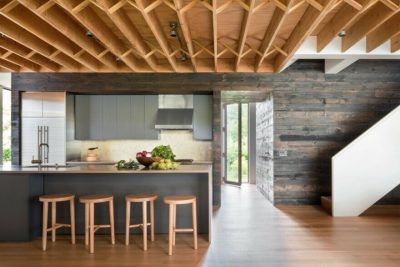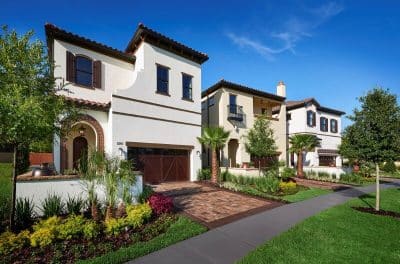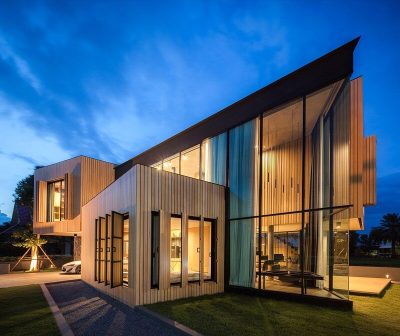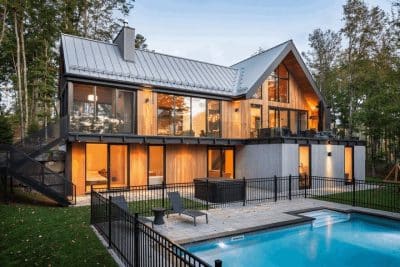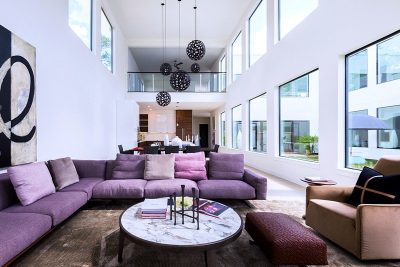Project: Splow House
Architect: Delution Architect
Principal architect: Muhammad Egha ST, Hezby Ryandi ST, Sunjaya Askaria ST, Fahmy Desrizal ST
Design Team: Indira Pramundita Setiadewi S.Ars
Location: Tebet, Jakarta Selatan, Indonesia
Area: 90 m2
Photographer: Fernando Gomulya
Text by Delution Architect
Delution Architect has designed the Splow House, a beautiful single-family house located in Tebet, Jakarta Selatan, Indonesia.
From the architect: As Jakarta is one of the most populous city in the world, we as the architect should find solutions when our client wants us to design a comfort house in small area with plenty of required room and limited budget. In 6 m x 15 m land area, the architect tries to make the house gets a lot of sunshine and good air circulation so the house can save the energy from lamps or air conditioners, with suitable space and budget.
Limited budget with plenty of required room make the architect create Split-Grow House concept wich means a split house that can be grown or build more someday depends on client’s budget to build the house. The split concept is used to manipulate the face of the house. The house requires 3 floor height but with split concept it only seen as 2 floor height from facade. It also makes this house adjust other houses height.
Split concept makes each floor is counted as half floor, start from first mezzanine to fifth mezzanine. Each floor will be built adjust to client’s budget. For this phase, client decides to build 3 level mezzanine first, and delay 2 other mezzanine. But the architect makes its floor facade to be fully done so the house seems like completely done from the outside. From the first mezzanine to the last mezzanine are conected by one big void which is becoming the main source for natural light and air. The void also has stairs as main access of the house. With the void, people can interact and communicate directly from different floor.
Beside the void for natural light and air source, the architect also makes 1 m width corridor alongside the house from front to back to be light and air alternative source, because the upper void has louvre glass. The corridor also use to placed water pump, bicycle, outdoor equipments, and also become second access for housekeeper.
The architect also placed many biopore as absorption to avoid flood because the ground level lower than the street. There is kitchen integrated with dining room in first mezzanine floor. To get around with limited space, the dining table made with folded style so it can be opened wide if needed. The architect also uses bottom glass under second mezzanine facade so people in first mezzanine can see if there any people coming to the house.
For the front area of the house, the architect makes the upper half of the house overstek for 2,5 m so it can cover the carport and front terrace as an outdoor area for guest. In second floor of the facade, there is a horizontal bouvenlicht as a bottom glass and air circulation for main bathroom. It also become an interesting facade element.

